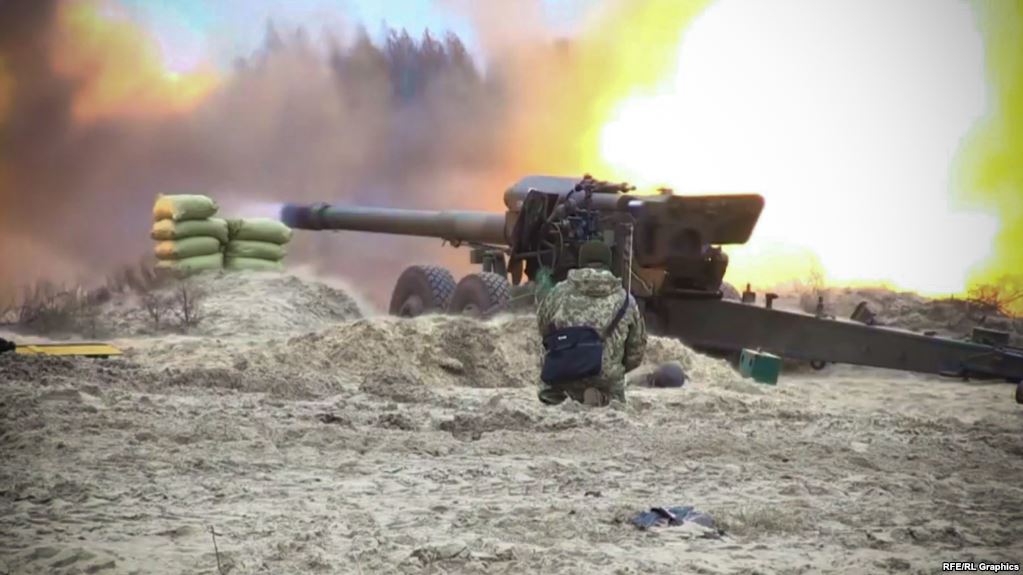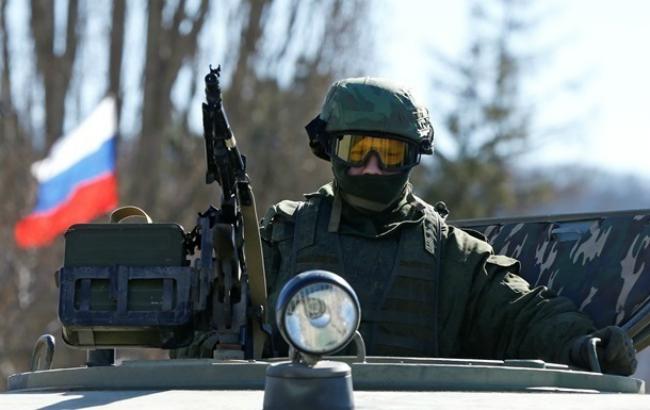2017 is over. The final stage of the testing of project “Vilkha” (a guided missile using MLRS "Smerch" as a launcher) has concluded. The machine fires four rockets at the testing ground near Odesa. The distance to the target – 70 kilometers.
“During testing, the rockets landed, truly, straight at the targeted point. This is a unique result which confirms the superiority of Ukrainian rocketry over its Russian analogs,” announced Oleksandr Turchynov, Secretary of the National Security and Defense Council of Ukraine.
Development of Vilkha became public knowledge at the beginning of 2016, but only in 2018 is the rocket system expected to enter service with the Ukrainian Armed Forces (ZSU).
A new guided missile system for the Ukrainian army
Project Vilkha is built on the basis of the “Smerch” Multiple Launch Rocket System (MLRS). The rockets have a caliber of 300 millimeters, and each rocket weighs 1000 kilograms. The launching mount can carry 12 rockets. The maximum range of impact is 120 kilometers. Furthermore, the trajectory of each rocket can be corrected in-flight, allowing each rocket to fly towards a separate target.
https://www.facebook.com/kbluchua/videos/1218112574917958/
Vilkha missile test launch
“The moment of impact is critical, and this weapon is psychological. Now the enemy will know that we have a powerful rocket with which we can carry out our own retaliatory strikes – the rhetoric of negotiations will change and they will begin to respond differently,” stated Valentyn Badrak, the Director of the Center for Army, Conversion and Disarmament Studies.
At the end of November, the “Artem” State-Owned Enterprise also finished the assembly of a line of rocket hulls, including those used for the Vilkha. But taken altogether, this is only one part of one more, no less important, directive for Ukraine’s defense industry.
Manufacture of munitions
Ukraine does not manufacture munitions. Soviet stockpiles are not endless. Back in 2005 analysts from the Razumkov Center tried to calculate what still remained in caches.
Back then 37 large military stockpiles existed in Ukraine. 2.5 million tons of ammunition could be found in army caches, however, because the “youngest” of these munitions dated from 1990, it became necessary to dispose of nearly half a million tons of ammunition which had reached the end of its technical term of responsible use.
Fires at artillery magazines also push the Ukrainian army closer to a dearth of ammunition. In 2017 alone, three artillery magazines went up in flames. 30,000 tons of shells exploded at the Kalinivka magazine. Expensive deliveries from foreign partners are now required to cover the lack artillery shells.

, Vinnytsia Oblast, 27 September 2017
“We never stopped negotiations over the purchase of munitions, even when we had sufficient munitions. We will buy whatever category of weapons – it is now necessary because we do not have sufficient quantities,” explained Stepan Poltorak, Ukraine’s Minister of Defense.
The time has come, and the decision has been made for Ukraine to establish its own munitions industry. Nearly half a billion hryvnia has been set aside for the construction of ammunition factories.
“It's about launching series production of ammunition in Ukraine from 100 to 150 millimeters in caliber. This is for ground-based artillery,” stated Yuriy Brovchenko, Deputy Minister for Economic Development and Trade. Part of the equipment, according to Brovchenko, has already been purchased. The Ministry of Defense of Ukraine has planned the first delivery of ammunition for the Ukrainian army for the middle of 2019.
The Pride of the Ukrainian Defense Industry
The “Oplot” Tank is the pride of the Ukrainian defense industry. It is the most modern, cutting-edge Ukrainian main battle tank.
“This tank is, in fact, equal to any foreign tank, like the German Leopard or the French Leclerc. This Ukrainian tank is better than any Russian tank, and this is confirmed,” explained Valentyn Badrak.
Donbas.Realii learned about the basic advantages of the war machine from the Malyshev Factory in Kharkiv, where the Oplot is manufactured.
“This machine is of the latest generation. It is superior in three basic ways. First is of proven superiority in the way of quality. Second, it is proven to be superior with regard to the defense of the crew and of the machine itself. Third, it possesses a great fire-control system,” explained Oleksandr Pashchenko, the Head of Manufacturing Administration at the Malyshev Factory.
With a weight of 50 tons, the tank can reach a speed of up to 70 kilometers per hour. It can go without trouble into the desert and even underwater. It is armed with a 125-millimeter cannon which fires guided rockets as well as standard shells.

The modern targeting-sight allows the crew to operate both night and day, and the multi-layer armor protects the crew from even cutting-edge enemy munitions. Each tank costs 120 million Hryvnia. Until now, the cost prohibited the Ukrainian military from purchasing the tank, and it was manufactured only for export. However, 2018 may prove the first year when this “tradition” finally changes.
“[Previously] we would sell these tanks abroad, while our boys would go to battle without them. Now, more than 300 million Hryvnia have gone to purchase of our own Oplot tanks,” President of Ukraine Petro Poroshenko commented.
Means of military communication
Yet another weak spot which will be strengthened in 2018, is communication within the ZSU.
“If there is no communication between commanders and soldiers, if there is no communication between high command and its subordinates, then one cannot speak of any general military administration,” said Valentyn Bardak, Director of the Center for Army, Conversion and Disarmament Studies.
Everyday mobile (cellular) phones have, until now, commonly substituted for high-quality military radio communications in the war-zone. However, this is an unjustifiable risk to soldiers.
“Each morning 100 to 200 telephones gather together at one place. What the enemy understands, is that either this is breakfast, or some kind of briefing, or a muster. And all that remains is to push a button and give a command,” warned Volodymyr Rapko, the head of the Chief Administration for Communications and Information Systems of the General Staff of the Ukrainian Armed Forces.
Thus from the end of 2016, the military actively tested potential means of communication from different providers for the Ukrainian army. The basic contest heated up between Elba, an Israeli company, and Aselsan, a Turkish company. In Volodymyr Rapko’s words, Aselsan’s products are recognized to be best suited for adaptation to the Ukrainian communication system. In October representatives from Aselsan stated that they would sell $43 million USD worth of communication hardware to Ukraine in 2018.

The re-equipping of the Ukrainian army with modern means of communication will begin at Aselsan’s training center in Kyiv. Here, servicemen will receive requisite knowledge to operate this modern technology. The training is divided into two parts – theoretical, done on the computer, and practical. For this, the full line of equipment is set up in class by the Turkish company.
Aselsan has engaged the Ukrainian company Everest to set up its training program, which will begin in 2018.
“It is the work of the enemy to prevent all communication, to silence the military command, make the soldiers leaderless and then destroy them piecemeal. Our equipment will actively counter-act the enemy’s radio jamming. This occurs in a moment, and allows one to receive and broadcast important decisions in real-time,” stated Dmytro Liulin, the head of the Department of Communications and Information Systems at the Everest Company.
Turkish communications units proved themselves durable under attack during testing. The Ministry of Defense plans to have finished re-issuing new communications hardware by 2020.
Armored fighting vehicles
Auto-transport is yet one more chronic weakness of the Ukrainian army which will be overcome in the new year. Donbas.Realii has more than once pointed out the inadequate situation with transport and how soldiers are moved around on the front. Soldiers are still waiting on changes in the new year with great hope.
“We’re practically smacking our chops, like cats around sour-cream, at these developments, but we understand that this will never happen while we’re in the army,” said Petro Perepelytsia, a soldier in the 12th
Separate Motorized Infantry Battalion.
The soldiers of this battalion (the “Kyiv Battalion”), with which Donbas.Realii met in the summer of 2017, only drive beaten-up “Bukhanka” trucks – patched up with coins after being shot.

Serviceman Petro Perepelytsia says that they use the Bukhanka trucks for evacuations, carrying out orders, carrying specific tools, water, provisions, weapons, and even for rescuing the wounded. Nonetheless, in 2017 the ZSU added the “Kozak-2” armored car to its arsenal for these purposes. The Kozak-2, its manufacturers assert, will not require coins over holes in its body.
Ukrainian army Kozak-2 armored personnel carrier
“This is class-5 protection. The armor is over 12 millimeters thick. This will guarantee protection against 5.45mm and 7.62mm caliber weapons, including sniper rifles with armor-piercing incendiary bullets,” announced Viktor Kryvyi, the Assistant Director of NVO “Praktyka”, the company which manufactures the Kozak-2.
Among the Kozak-2’s chief qualities are anti-mine defense, bulletproof glass, armored tires which continue to roll even if they are shot-through, a combat module, a night-vision camera, and, a standard suite of features for the crew’s comfort.
“Inside is a climate-control tool which allows the maintenance of a supported temperature within the car. There is air-conditioning and heating, including automatic heating. There is a filtered ventilation system, with protection against ballistic, chemical and biological weapons,” Viktor Kryvyi explained.
No more than ten such cars have appeared in the arsenal since they entered service with the army. Other models, generally, have not yet undergone all necessary testing. Experts believe that 2018 will be the critical year for equipping the military with new armored fighting vehicles.
“I think that this coming year will be a year of competition among armored vehicle manufacturers for a place with the military. The competition for this segment of the market will involve both the vehicle’s technical capabilities and the manufacturer’s lobbying capabilities,” said Serhiy Zhurets, the Director of the Defense Express Information-Consulting Agency.
Armored vehicles developed by Kraz for the Ukrainian army
According to calculations by Defense Express, the Ukrainian army will require over 5,000 armored vehicles. In its entirety, the military plans to spend 5 billion Hryvnia more on armaments this year, than it spent last year.
Read more:
- Why Ukraine needs lethal weapons
- Ukraine’s second biggest munitions depot on fire, 30’000 evacuated
- Conspiracy: The US creates bioweapons in 400 countries (there are only 195)
- Friends in need: 18 countries who gave Ukraine non-lethal military aid
- Pentagon chief in Kyiv: defensive weapons are not provocative unless you’re an aggressor
- Ukraine will manufacture its own military drones — Turchynov
- Donbas “separatists” got 33 types of military systems from Russia – report
- Ukrainian Weapons – What Local Factories are Producing for the Army
- Stugna-P: the Ukrainian Javelin
- non-lethal military equipment from USA
- Poroshenko: Ukraine needs radars, drones, not advanced lethal weapons
- Ukraine’s challenge: reform the army or perish






